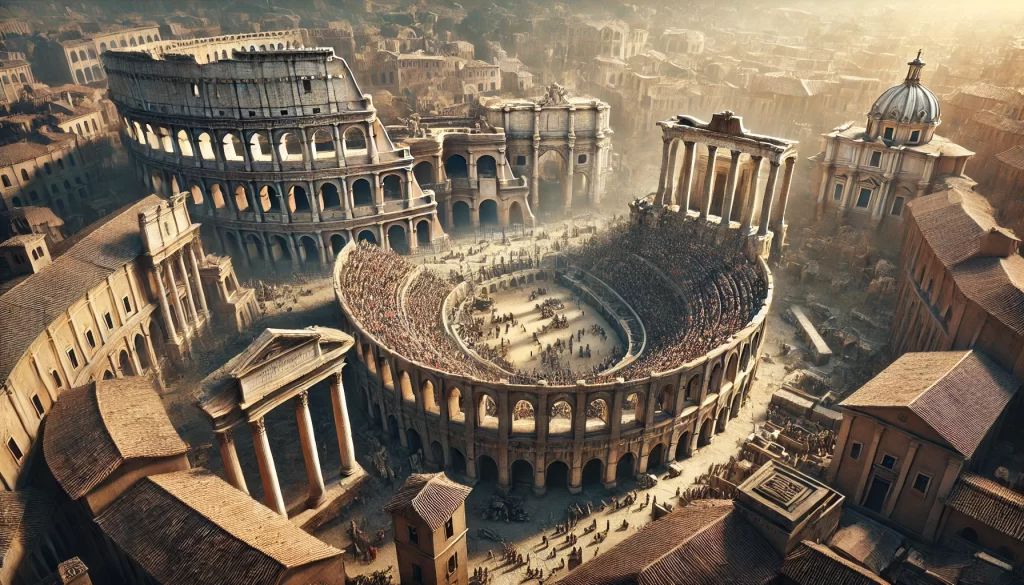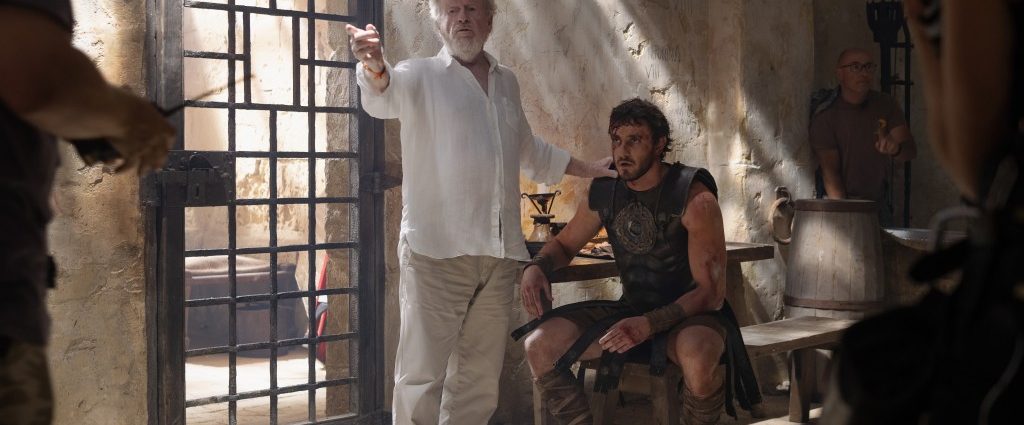One of this year’s most anticipated films is undoubtedly The Gladiator II. With Ridley Scott again handling the direction, Rome returns as the setting in this sequel where Lucius, son of Lucilla (Connie Nielsen), played by Paul Mescal (Normal People, All of us strangers) is captured by the Romans and forced to fight inside the arena as a slave following a campaign led by General Marcus Acacius (Pedro Pascal, Game of Thrones). Scott returned to film in Malta, Morocco, and England, where some of the most important buildings were reconstructed but since the sets were dismantled after the end of filming, we suggest an itinerary among the original monuments.
THE COLOSSEUM
Vespasian began construction of the Colosseum (70/72 AD) as an act of Imperial propaganda. The name “Colosseum” derives from the Colossus of Nero, an enormous 30m-high bronze statue allegedly designed by the Greek architect Zenodorus.
The Colosseum was the scene of thousands of hand-to-hand combats between gladiators, of contests between men and animals, and of many larger combats, including fake naval engagements. One scene in particular has caused much discussion regarding historical accuracy and that is the one involving sharks in the Colosseum. To the accusation Scott replied: “You’re dead wrong. The Colosseum was being flooded with water and there were naval battles…. Man, if you can build a Colosseum, you can flood it with the damn water. Are you kidding me? And catch a couple of sharks in a net from the sea and throw them in there, of course they could do that., later emphasizing that since Roman engineering and technology was superior, the scene is credible.
The holes in the travertine, once housed massive bronze clamps that held the blocks together, making the structure semi-earthquake-proof. However, bronze was an extremely valuable commodity during the Middle Ages and so the Colosseum was mined of roughly 300 tonnes of bronze. As a result, an earthquake in 1349 caused the collapse of part of the outer ring.
After being sacked and plundered over the years, what we see today is only a small part of the original structure. The Colosseum is glimpsed almost immediately as the setting moves from Africa to Rome, but it becomes the real star when an overhead shot of the Flavian amphitheater shows the crowd in raptures at the start of the games held in honor of General Acacius and his victory..
Inside the arena
Beneath the arena is the under-stage area, the Hypogeum (81-96 AD). The existence of this vast network of underground rooms, cells, tunnels and passages is also seen in the first “Gladiator”. This zone was used to house animals, stage props, slaves, condemned criminals and gladiators prior to and during the games.

THE IMPERIAL FORUMS
The buildings and squares that form the area of the imperial forums were the center of political, economic and religious activities between 46 BC and 113 AD.
The temple of Jupiter
Built with peperino boulders and sack work to thank the God Jupiter for restoring order among the Roman soldiers after they were attacked by the Sabines, its remains can now be identified on the south side of the Arch of Titus.
The temple of Saturn
The building, inaugurated in about 498 BC, was completely rebuilt from 42 BC by Lucius Munazius Plancus with the spoils of the Syrian war and restored after the fire of 283 AD by the Senate. Having undergone numerous restorations, the remains we see today belong to different eras.
The Arch of Titus
It is a triumphal arch with a single arch, located in the eastern part of the Forum. Not far from the Colosseum, it is the emblematic monument of the Flavian dynasty (69 AD – 96 AD). It was probably built in his memory by his brother Domitian, the last emperor of the dynasty. In the centre of the vault is a relief depicting the apotheosis of Titus, who, on an eagle, ascends to heaven to be welcomed into the world of the gods.
The temple of Jupiter, the temple of Saturn and the Arch of Titus are visible in the movie at the moment when General Acacius returns triumphant to Rome after the conquest of Numidia and on a chariot makes his way before the emperors Geta and Caracalla while the crowd applauds him.

